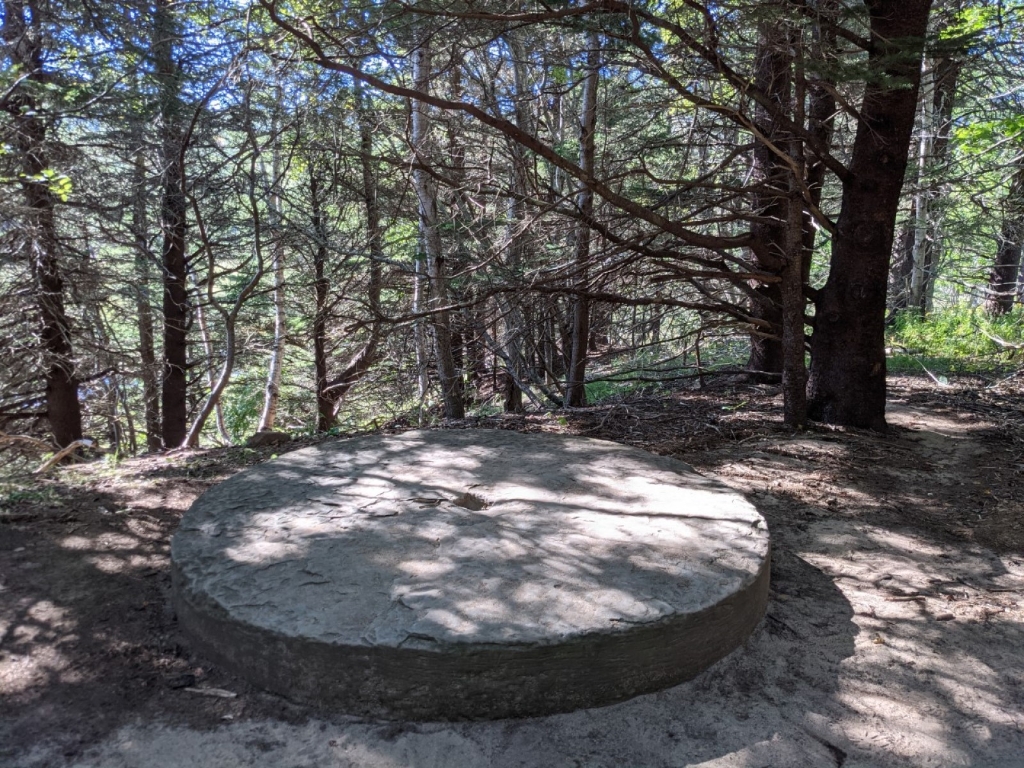
The circular shaped stone in front of you is not a remnant of an ancient civilization or a sign from alien spacefarers who once visited this place… it is an old mill stone also commonly known as a grinding stone. Long before automated machines ground grain into flour, humans for millennia turned their grain into flour with stones. You might have seen “stone ground” labels in your local grocery store aisles.
The local mill would be the location one would take grain to get ground into flour. Within the mill was a built system of wooden wheels, shafts, and gears designed to harness waterpower from a water wheel or wind power from the blades of a windmill. The system of wheels, shafts, and gears were attached to the top stone and provided power to the stone. Mill stones or grinding stones were always in pairs of two. The stationary stone on the bottom was called the bed stone while the stone that moved suspended above or on top of the bed stone was called the runner stone. There are different ways the stones were oriented depending on the era in history or the location in the world.
As the runner stone turned over top of the bed stone the grain was slowly dribbled from a spout (or hopper) into the hole in the center of the runner stone. Both the runner stone and the bed stone had grooves (also referred to as furrows) cut into them. The grooves/furrows were cut and angled in a way that acted like a scissor action cutting or grinding the grain into flour. The stone surfaces were angled in a way that allowed the grain to move outward as the stones turned. The flour was caught by a wooden case surrounding the bed stone. The flour would be ground again if a different coarseness or fineness was desired.
Historically, there was never a gristmill (building where grain is ground) here at the Sand Beach / Great Head area. The Satterlee estate. While we can’t confirm with 100% certainty, we know through historic newspaper articles and personal primary source diary entries that a Schooner named the Abbott wrecked on Baker’s Island in December 1896. The cargo of the Abbott consisted of 160 tons of grindstones. Many of these grindstones eventually were salvaged and brought to Mount Desert Island. Some stones found their way to local mills on the island and others found their way to the gardens and estates of the wealthy summer residents. Through these historically written clues it is a safe bet that one of those “7 foot x 14 inch” grindstones found its way onto the Satterlee estate where it was used as a bench, a flagpole base, and a conversation piece by the Satterlee family.
Is there something we missed for this itinerary?
Itineraries across USA


















































